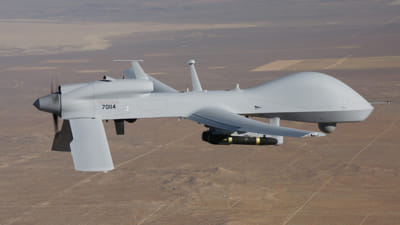US Army Joint Technology Center/Systems Integration Laboratory (JSIL) and Tintri Combine Forces
To train drone pilots and replacing slow NetApp configuration
This is a Press Release edited by StorageNewsletter.com on July 8, 2024 at 2:00 pmThe US Army’s Unmanned Aircraft Systems (UAS) operators are remote pilots of observation aircrafts (or drones) that gather intelligence used in operational tactics.

As intelligence specialists, the drone pilots are integral to providing US Army personnel with information about enemy forces and battle areas. The UAS Joint Technology Center/Systems Integration Laboratory (JSIL) is the IT center responsible for testing, developing, and maintaining the software and hardware for the Army’s drone and missile programs.
Challenge: Storage Costs Increasing, Performance Unpredictable
Rory Hamaker is a lead systems administrator and infrastructure architect at Ameritech/SED, a civilian contractor agency that provides IT services to the JSIL labs. “We design and publish the training software the US Army uses to teach soldiers how to fly drones,” he noted. “We support war game exercises and soldier training worldwide. Our group manages all of the IT infrastructure and the software development environment for this project.“
JSIL had been using NetApp arrays to store the lab’s database imagery and drone software source code.
“We were experiencing a lot of slowdowns with our existing SAN storage solution,” noted Hamaker. “The NetApp units were built for capacity, not speed. This was causing a lot of disk I/O problems in our training software. The 7,200rpm NetApp disks were causing very slow read/write times back and forth to VMware. As a result, all of the VMs were slow to respond to the automated test setup. This resulted in unacceptable delays within the system, impacting ability to train the drone pilots.“
Solution: Tintri VMstore T820
Hamaker first heard about the Tintri VMstore solution from a colleague at StorageHawk, an IT services provider that also works with the JSIL facility.
“I liked the fact that VMstore is VMware specific, it was designed for virtualized environments,” he explained. “And since it‘s a hybrid storage platform, I knew the systems could provide the speed as well as the capacity we needed for our VMware environment.“
He decided to run a PoC on the VMstore systems to see if they lived up to their stellar reputation.
“We jumped in with both feet,” he admitted. “Tintri shipped us out a new T820 demo unit, which we later purchased. We put it in our testing environment and immediately moved several VMs over. We ran a series of disk I/O tests on the VMstore system and all of the numbers were very impressive. After three to four weeks of pushing the systems as hard as we could, we moved everything over to VMstore and have never looked back.“
Result: Faster Deployment, Better Performance, More Productivity
The difference between standard infrastructure and intelligent infrastructure was apparent immediately.
“I have been managing IT infrastructure for over 14 years and have yet to find anything as easy to deploy as the VMstore systems,” Hamaker reported. “We went from in the-box, to having VMs running in production in less than 2 hours. Our old NetApp systems were much more difficult to configure. Since they were not designed for virtualization, we had to manually add everything to VMware, which added significantly to the configuration time.“
He noticed a huge improvement in application performance immediately after switching to the Tintri VMstore systems.
“We ran some speed tests once we switched from our NetApp unit over to the VMstore,” he said. “We obtained a 220% speed increase in our disk I/O environment and at least 100% improvements on all of the other tests.“
User productivity and satisfaction have skyrocketed as well.
“We used to get 15 to 20 trouble tickets each week from end users complaining about application performance,” noted Hamaker. “Their VMs were locking up and not enabling them to connect to the training modules. It was always a disk problem – the VMs couldn‘t find the VMDK over on the storage unit, or there were too many IO/s happening on the storage unit at that time and the storage unit couldn‘t provide the VMDK files fast enough. As a result, VMware just timed out. Since moving everything over to VMstore, I haven‘t received a single trouble ticket or user complaint about system performance. In IT support, no news is good news. Our end users rarely contact us if we‘re doing a good job, they only call us when something is broken.“
“The Tintri management interface is very simple and intuitive,” he said. “It enables our team to stay on top of system performance and capacity levels. When we were using NetApp connected up to vSphere, I was not able to easily see any of the statistics or performance metrics that I needed. Now, when I log into the Tintri management console, all of my VMs and snapshots are listed on one comprehensive view. I can get a real-time display of our current IO/s and disk space. The ability to manage all of my snapshots from one place has been significantly helpful. It‘s not only the end-users who have a much higher satisfaction level; our IT team is much happier as well.“
“We have been extremely pleased with our decision to move to VMstore,” he concluded. “I have been trying to think of something I could suggest to Tintri to improve the storage systems, but Tintri has already thought of everything!“















 Subscribe to our free daily newsletter
Subscribe to our free daily newsletter

